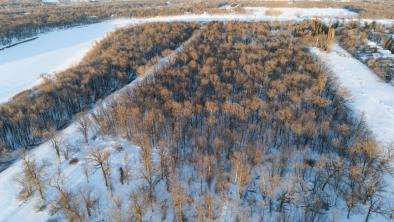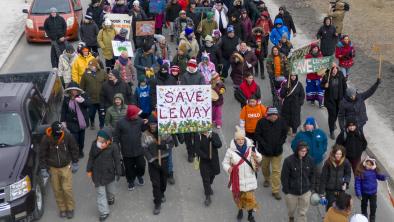‘This is sacred’: the fight against a massive frac sand mine in Manitoba
The Narwhal

The project — which would extract 1.2 million tonnes of sand every year for the next half-century — was excluded from federal review but approved by the Manitoba government in a process opponents say violated Indigenous rights
When giant thunderstorms erupt over Lake Winnipeg in the summer, lightning sometimes strikes the sand of the eastern shore.
The astonishingly hot temperature of the lightning can fuse the quartz-rich sand into small fragments of “fulgurite,” which may light up with a flash when knocked together due to triboluminescence (the same natural phenomenon produced when crunching on a wintergreen-flavoured Lifesaver in the dark).
These fragments of “petrified lightning” are placed in rattles used in ceremony and in sweat lodges like the one that sits at a small peace camp — Camp Morning Star — erected on the traditional territory of the Hollow Water First Nation in mid-February by those opposed to the industrial removal of sand for use in major fracking operations across North America.
“The sand is connected to the stories” of the Hollow Water, explained MJ McCarron, a long-time resident of the area and participant of the camp, which consists of a small collection of tents, a tipi, a sweatlodge, and a communal area. McCarron, who previously worked with the Treaty Relations Commission of Manitoba and was a former teacher in Hollow Water said the sand itself plays a vital role in ceremonial aspects of the community, which she married into.
“In ceremonies surrounding death, they put the silica sand around the body because it was connected directly to the stars. They’re connected. This is sacred.”
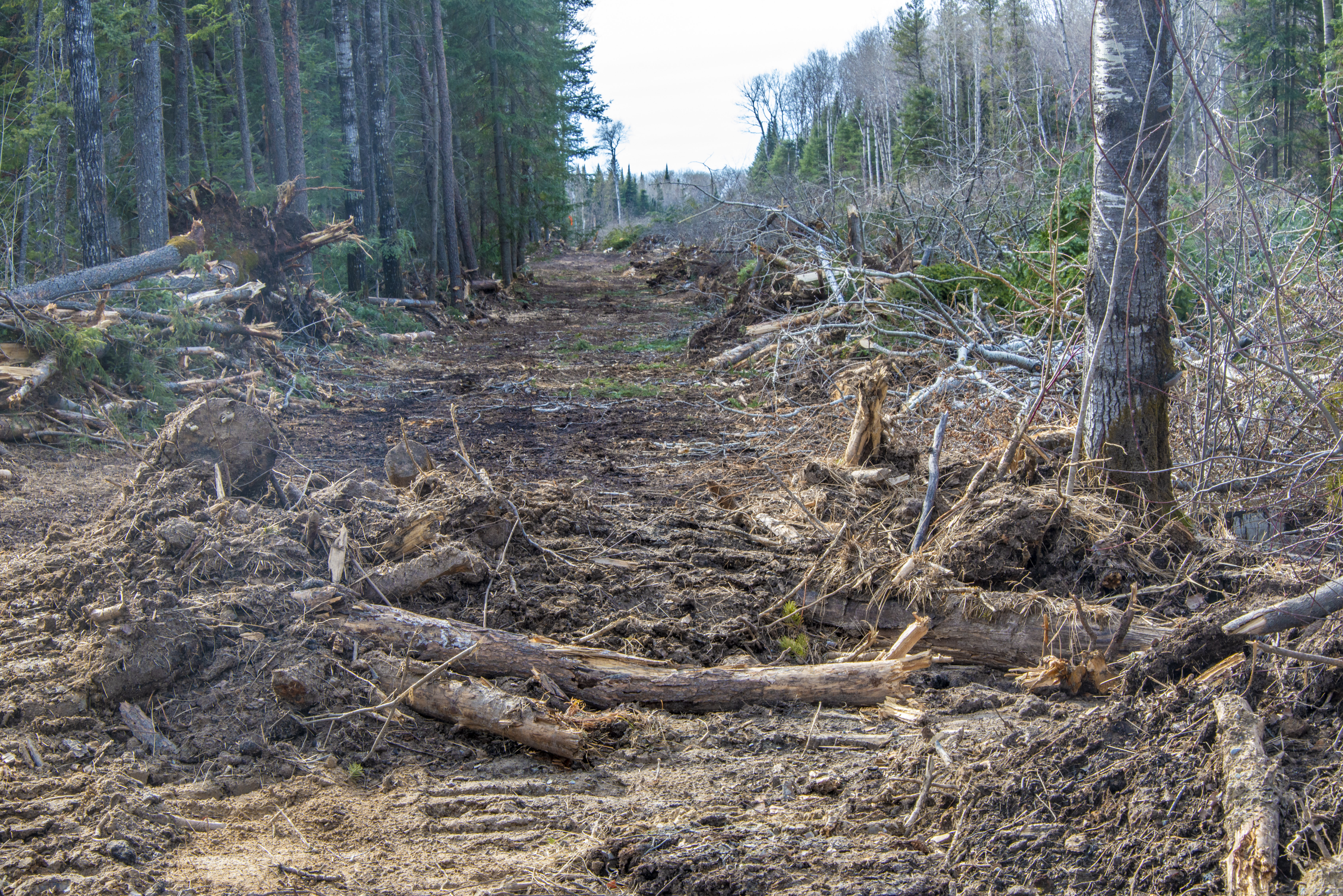
No federal review to remove 1.2 million tonnes of sand each year for 54 years
Camp Morning Star was erected three months before Canadian Premium Sand received provincial approval to extract and process 1.2 million tonnes of silica sand — enough to fill 7,228 beach volleyball courts — every year from the Seymourville deposit near the Hollow Water First Nation, located 160 kilometres north of Winnipeg.
If built, the mine would operate 24/7 for 54 years, mining an average of five hectares each year, impacting a total 353 hectares over the life of the project — the rough equivalent to 654 football fields — to service fracking operations in Alberta, British Columbia and North Dakota.
The company proposes to use a “progressive rehabilitation” process that would limit the disturbance of land to 83 hectares in a given year and would attempt to restore the mine’s 10 to 30-metre pits in an ongoing fashion.
“I really don’t care what environmentalists have to say about it.” — Chief Larry Barker
Despite significant criticism of the project, the company — which was known as Claim Post Resources until mid-November — received an Environment Act Licence in May from the Government of Manitoba. The licence came with 98 conditions, including future water testing for contamination and survey work to identify plant species traditionally used by local Indigenous communities.
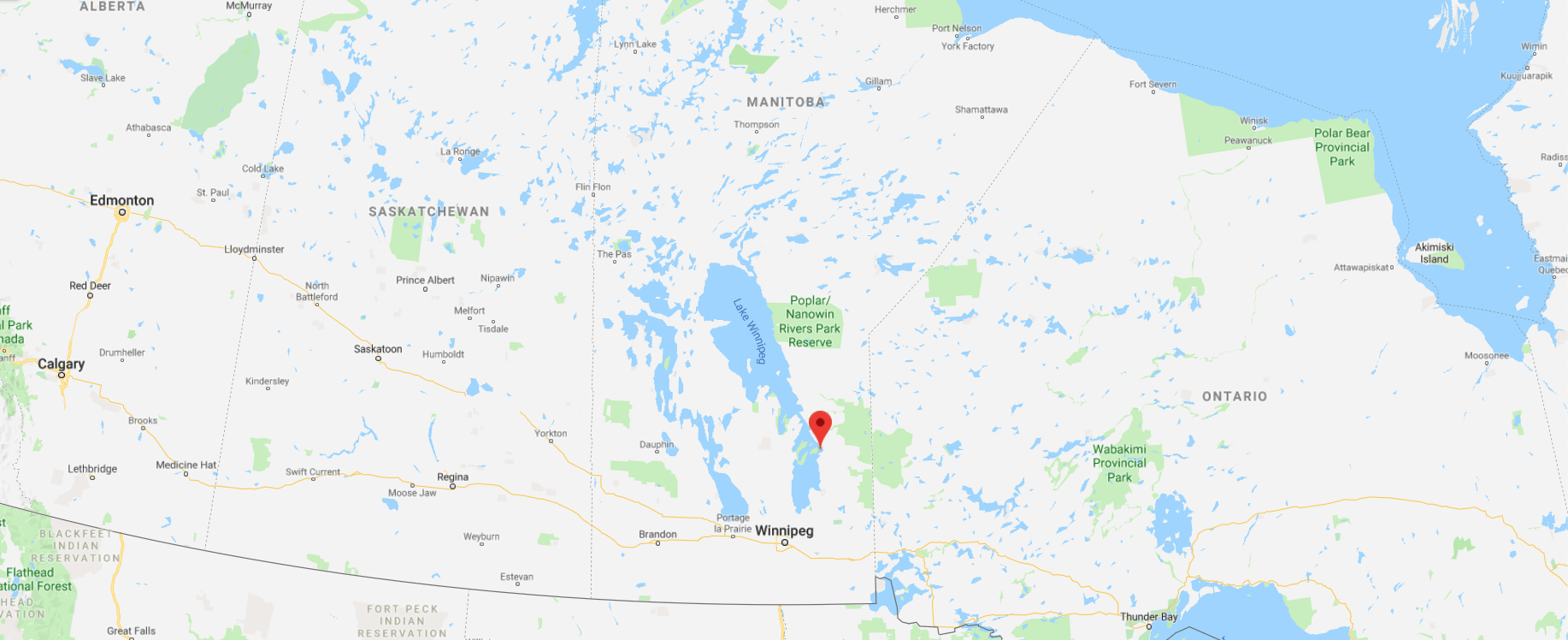
One day after the province awarded the licence, federal Environment Minister Catherine McKenna issued a letter to the company stating the project would not be subjected to federal environment oversight. An online petition, calling for federal review of the project’s environmental and Indigenous rights impacts, has gathered more than 3,000 signatures.
In a December news release, Chief Larry Barker said: “I really don’t care what environmentalists have to say about it.”
Hollow Water First Nation’s chief and council endorsed the project, controversially waiving the community’s rights to Crown consultation.
But that hasn’t stopped residents of Hollow Water — along with people from nearby communities of Manigotagan and Seymourville and Winnipeg — from escalating opposition to the project.
“We’re at a point in our society where we certainly cannot afford to have more fossil fuel exploration,” McCarron stressed.
“And we certainly can’t afford to have mining exploration just anywhere.”
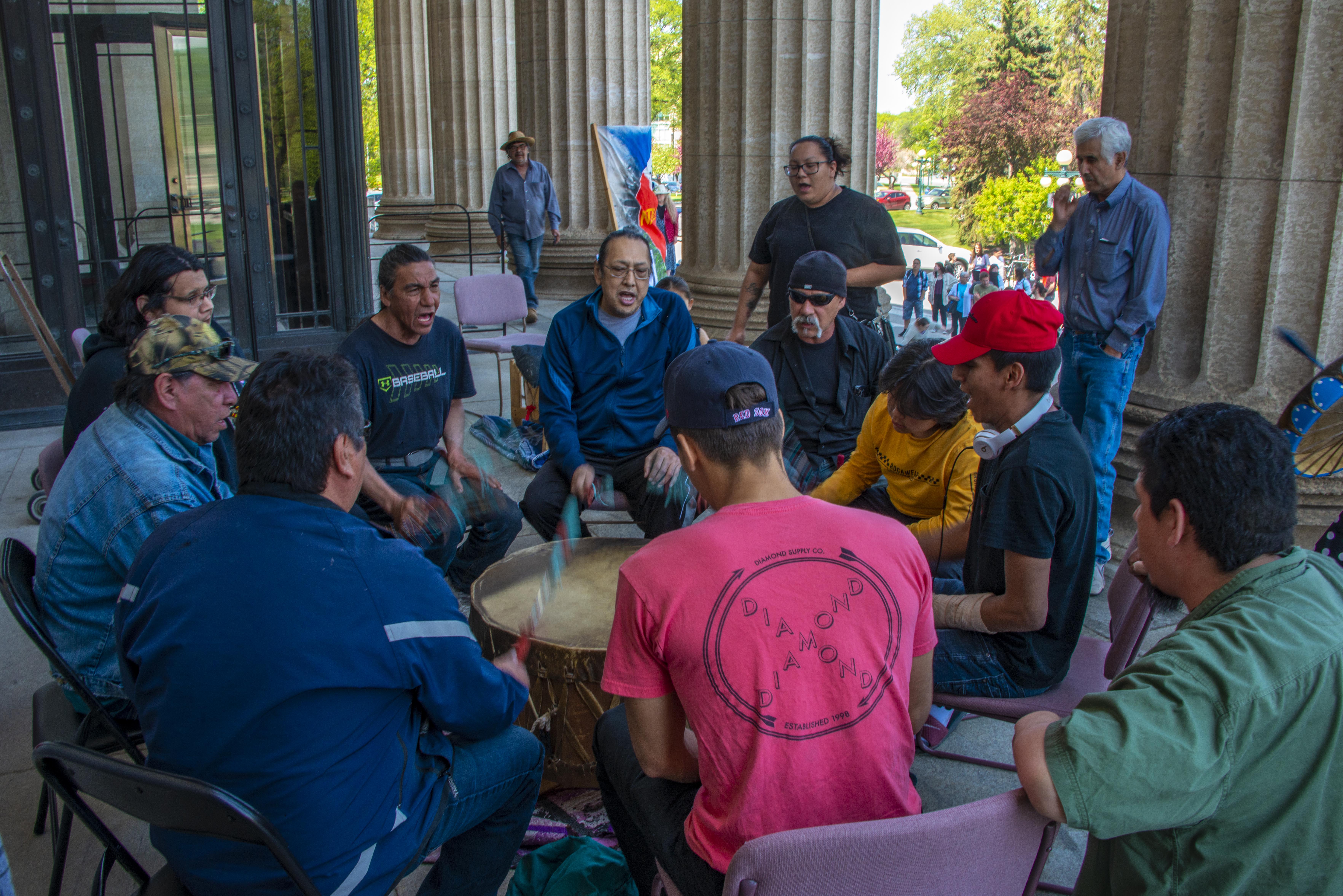
Demand for frac sand skyrocketing
Sand plays a vital role in fracking. In 2014, Drillinginfo.com described proppant — the industry term for sand and similar materials — as “the great oilfield innovation of the 21st century.”
Fracking uses high-pressure injections of water and chemicals to create tiny cracks underground that allow trapped oil and gas to be released and extracted. Proppant plays the critical function of keeping the cracks physically propped open after initial fracture.
But it can’t just be any kind of sand. Proppant granules have to be very specific dimensions, consistently round and spherical, “crush resistant” and with very high purity to ensure it doesn’t turn into powder under the immense pressure.
The silica sand at Hollow Water First Nation checks all those boxes and is highly attractive to companies looking to avoid more costly ceramic beads or other manufactured alternatives.
This isn’t the first time Manitoba’s silica sand has drawn commercial interest.
A silica sand quarry on Black Island, an important ceremonial site adjacent to Hollow Water, operated on and off between the 1920s and 1990s. The Manitoba government conducted exploratory drilling of the currently targeted Seymourville deposit in the 1980s, with other companies completing further drilling in the 2000s.
Demand for the sand is skyrocketing: drillers in the main shale fields of B.C. and Alberta consumed more than five million tonnes in 2018 — enough for over 30,000 sand volleyball courts).
Canadian Premium Sand reports a 25 per cent growth rate of proppant required per well, year over year.

There had long been rumours about a mine near Hollow Water. But it was not until November 2018 that community members started hearing specifics about the project.
Community referendum on project not conducted
Lisa Raven — a participant in Camp Morning Star, Hollow Water band member and executive director of Returning to Spirit, a non-profit that focuses on reconciliation and residential schools — told The Narwhal that some community members were angry about the proposal at an initial community meeting about the mine.
According to Raven, Chief Barker told the crowd there would be more information sessions and a referendum about the proposal, which quieted down the meeting. But a few weeks later, on November 29, Canadian Premium Sand issued a press release, stating the company had signed an economic participation agreement with the First Nation.
In the release, Barker said: “We have listened to our elders, our community members, our environmental advisors and our local neighbours. We have the mandate of our people to move forward in economic partnership with Canadian Premium Sand to build a prosperous future for our people in a way that protects and respects the lands we share, for the next 50 years and beyond.”
The website for Camp Morning Star states that while the project was approved by the band council, that may not be sufficient to satisfy the duty to consult under Section 35 of the Canadian constitution.
“That’s what it was for me,” Raven recalled in an interview with The Narwhal.
“I didn’t feel that I was consulted. I didn’t think anybody was. For me, that wasn’t true. That’s kind of where it started for me.”
Three months later, in the cold of February, Camp Morning Star was built.
Hollow Water First Nation has an unemployment rate of 34.2 per cent, more than five times the provincial average. Canadian Premium Sand estimates its project will require 75 workers at the mine itself and up to 50 workers as truck drivers to carry sand to Winnipeg. The company also committed to paving new and existing roads and upgrading water treatment facilities in Seymourville.
Yet McCarron expressed concerns that the good resource jobs will be filled by non-Indigenous outsiders, not locals in need of work — a trend that has been seen elsewhere in the province, including at Manitoba Hydro’s Keeyask dam.
Chief Barker did not respond to multiple requests for comment from The Narwhal.
Critics concerned about air quality, traffic safety, impacts on groundwater
Resistance to the project quickly started to coalesce after the company’s Environment Act Proposal was filed in late December.
Don Sullivan, former director of the Boreal Forest Network and government advisor for the Pimachiowin Aki UNESCO World Heritage site, came out of retirement to advocate against the project through an organization called What the Frack Manitoba. He was joined by Dennis LeNeveu, a physicist who previously worked in the nuclear fuel waste management program at Whiteshell Laboratories.
The ad-hoc group knew they would only have a short window to respond with public comment to the company’s proposal. McCarron said they worked through Christmas and much of January to compile a thorough counter-argument.
The three of them submitted 47 pages of comments in early February. They weren’t the only critics.
Dozens of other people — including cottage owners, Indigenous residents and local business owners — issued written concerns about the project’s potential impacts on groundwater, air quality, noise and vibration, fish habitat, hunting rights, worker health, permanent degradation of land, its immediate proximity to Lake Winnipeg and the brevity of the consultation process.
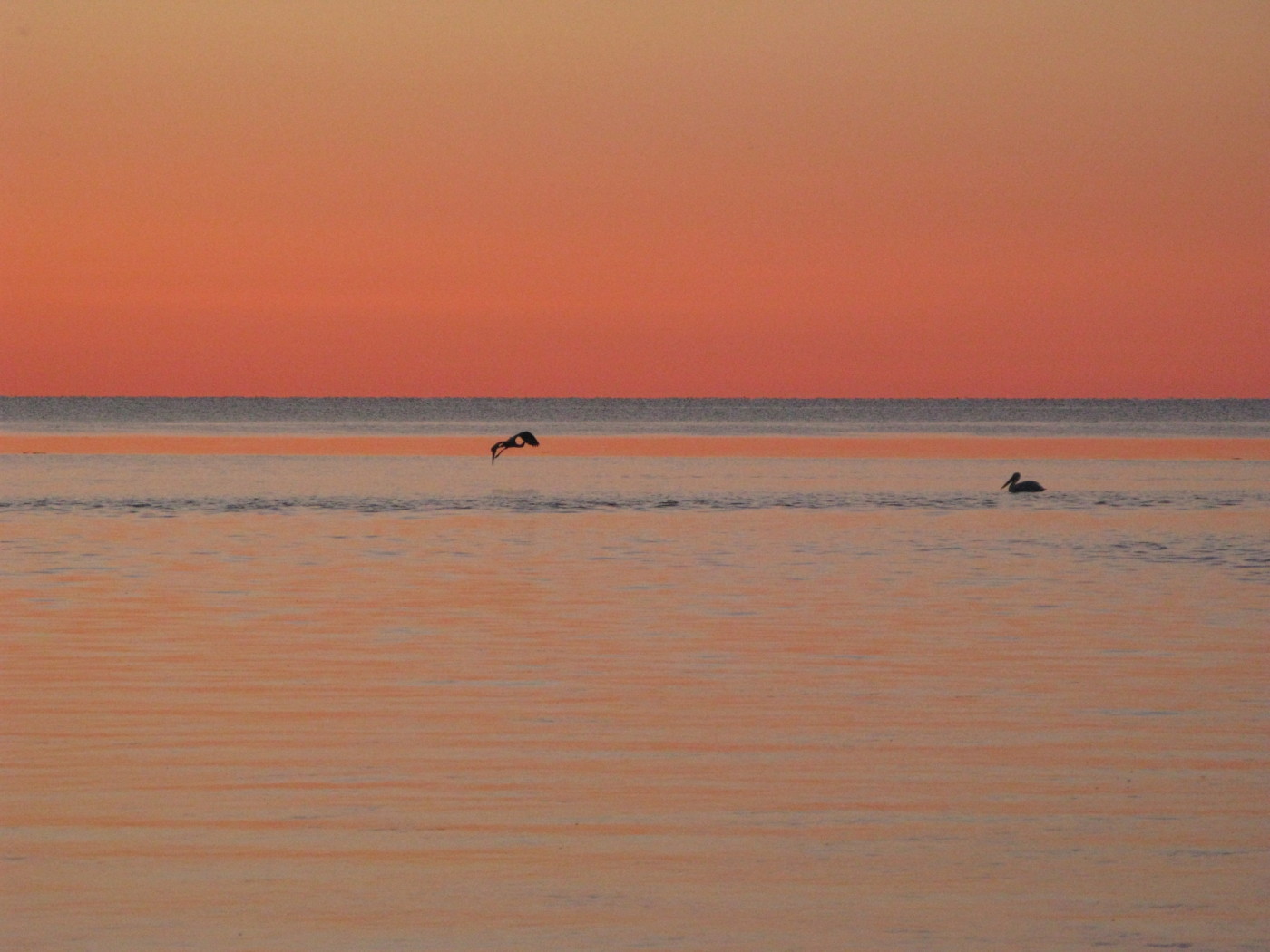
Many cottagers expressed serious opposition to the increase in traffic on highways, with the company estimating that 96 vehicles related to the project will enter and exit the First Nation every hour, with three or four of those being 40-tonne trucks carrying sand.
An air quality report submitted by the company as part of its Environment Act Proposal reported particulate matter output of up to two to five times the province’s ambient air quality criteria. While the company plans to eliminate silica sand exposure by fully enclosing its wash and dry facility under negative pressure and using waterproof sealed covers for the trucks, it made reference in its application to a “worst-case scenario” of “days of extended long, dry, hot weather during non-winter months coupled with high winds” that may spread the carcinogenic dust.
The Manitoba government explains on its website that climate change will mean “longer, warmer and drier summers,” a description resembling the company’s “worst-case scenario.”
“There’s nothing in there that says how they’re going to handle this,” said Eric Reder, director of the Wilderness Committee’s Manitoba office.
“What happens if the wind starts blowing? Do they have a five-hectare tarp that they’re going to pull out over this in a very strong wind and keep the sand in place? Are the kids from the daycare going to be running inside and everybody’s going to be putting on their P95 air filters? This is a horrible concept, and it’s a horrible concept to do at Hollow Water First Nation.”
A technical advisory committee assembled of experts by the province articulated many similar concerns.
Karen Robinson, medical officer of health for the Interlake-Eastern Regional Health Authority, wrote that potential impacts on air quality were “very concerning” as exposure to silica dust can cause silicosis, a serious lung disease. However, the technical advisory committee’s comments were not posted online until February 19, after the window for public comment closed. That meant the only information available to the public during the comment period was provided by the company.
A hydrogeological report detailing where the project would gather up to 750 litres per minute of water for processing the sand also was not completed before the public comment period, leading to concerns among critics that long-term reliance on groundwater supply could impact surface water, wetlands and fish habitat. A closure plan for the project had also not been completed before the closure of the comment period.
Glenn Leroux, president and CEO of Canadian Premium Sand, declined to comment for the article, writing in an email that he wouldn’t provide his perspective unless The Narwhal interviewed both Chief Barker and Seymourville Mayor Burnell Helgason.
Chief Barker and Helgason did not respond to numerous requests for comment.
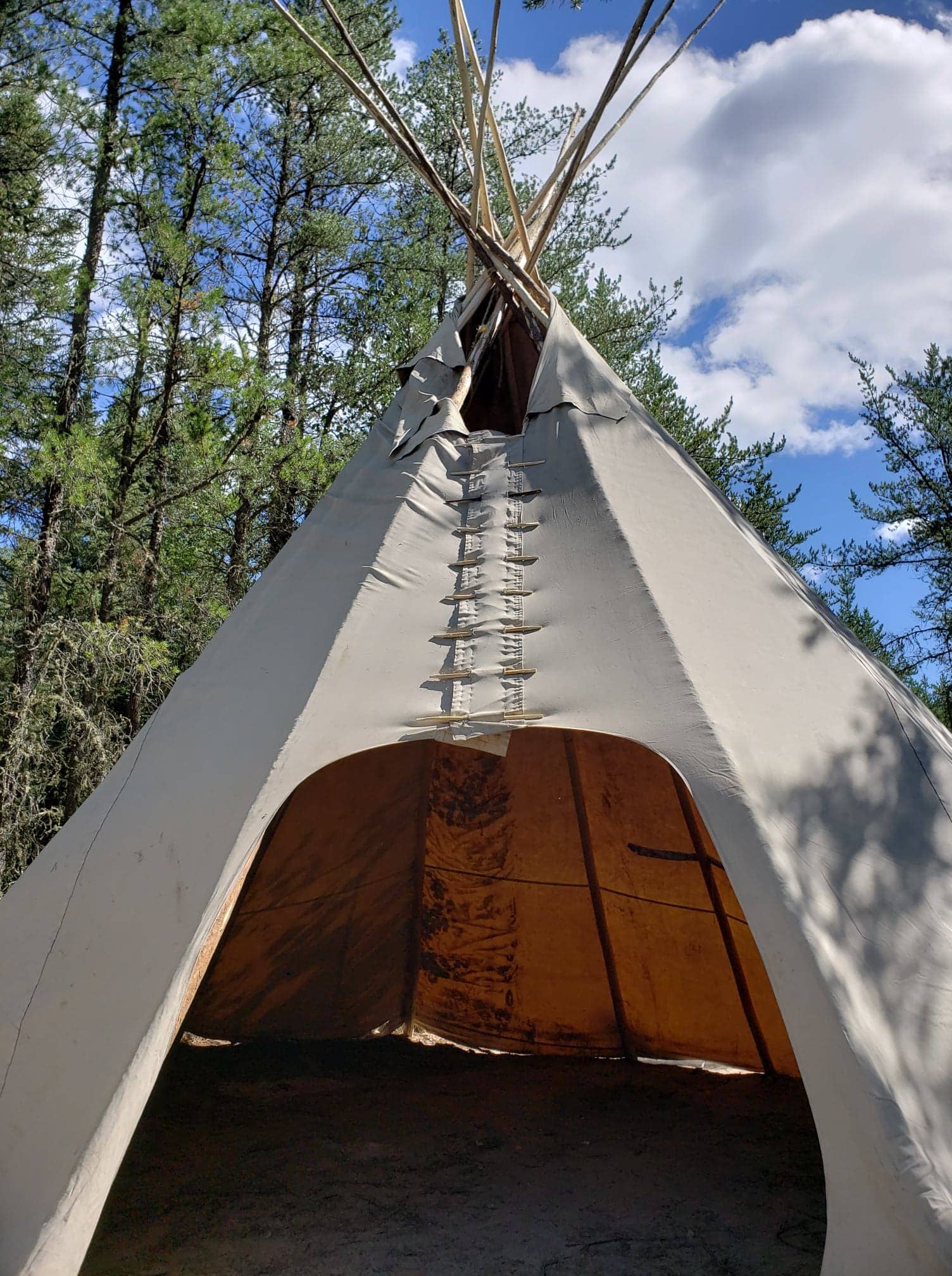
‘We cannot have business at all cost’
The future of the project is unclear.
Canadian Premium Sand — whose shares are mostly insider owned, with another 12.4 per cent owned by Calgary’s Paramount Resources as of July 2019 — has undergone a significant restructuring of management in recent years. The company’s founder and long-time president and CEO Charles Gryba was quietly ousted at the end of 2017, and wasn’t replaced by Leroux until March 2019. Its chief operating officer resigned in mid-June after just over a year at the company (but has since earned $1.1 million in consulting fees from Canadian Premium Sand through his other companies).
Capital costs for the mine are estimated at a sizable $220 million. The company hasn’t yet made its final investment decision about the project, but is conducting a capital optimization review that will be completed by the end of September to try to reduce the project’s large upfront expenses. The company’s latest management discussion and analysis filing reported a deficit of $24.9 million and rapidly declining cash holdings, and reiterated the need for additional financing.
“They’re not participating in a respectful process of true exchange of information. Our world can’t take that.” — MJ McCarron
Both Raven and McCarron told The Narwhal they have heard rumours the company may pull out of the community in the near future. But McCarron said that while it looks like the camp may have won for now, the underlying problem still remains as the company could sell its leases to someone else or get them off the land only to return next year.
“You’re never safe,” she said.
McCarron added that the group could have mounted a strong lawsuit over the consultation process but they don’t have nearly enough money to take on the government.
So far, the camp has received public support from NDP MP Niki Ashton and Manitoba NDP MLA Rob Altemeyer. The press secretary for Minister of Sustainable Development Rochelle Squires did not reply to a request for an interview with the provincial minister. Instead, a spokesperson for the Ministry of Growth, Enterprise and Trade responded in an email: “Environmental safety, including human health and safety, were components of the Environment Act review process.”
“This is the treaties all over again,” McCarron said. “People are coming in and snowballing people. They’re not participating in a respectful process of true exchange of information. Our world can’t take that. We cannot have business at all cost.”
Every week, the dozen or so people who have kept Camp Morning Star running come together to recommit themselves to the struggle: “One more week, one more week,” Raven tells herself.
If it’s a Saturday, the group will share a feast. If it’s a Sunday, they will enter the sweat lodge, shaking a rattle containing the fragments of sand they are fighting to defend.
Read the original article by James Wilt and published by The Narwhal by clicking here.
